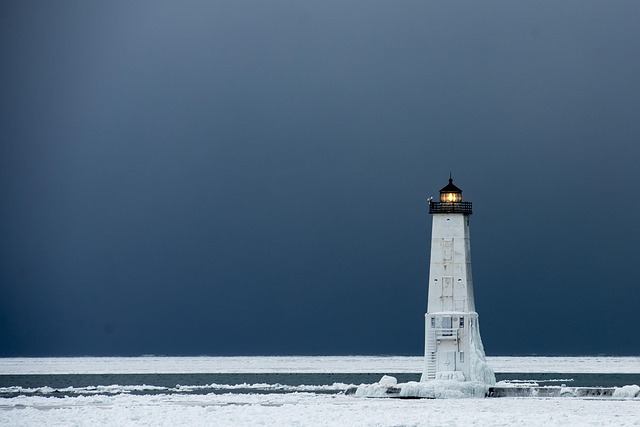Planning an Arctic Northern Lights Voyage by Sea
Seeing the aurora from a ship can be breathtaking, but it takes smart planning. Routes well into the Arctic, late-night access to dark decks, and an eye on space weather all matter. This guide explains how to choose itineraries, ships, and dates to improve your chances of witnessing the Northern Lights.

Watching the aurora from the open sea combines the thrill of exploration with front-row views of the night sky. To improve your odds, it helps to understand how destination, timing, and ship design interact with nature’s unpredictability. Cloud cover, moon phase, and solar activity can make or break a night, while the right itinerary, onboard expertise, and low-light viewing areas can turn a clear forecast into a memorable display.
Premium itineraries for aurora viewing
Premium cruise itineraries designed to maximise chances of seeing the Northern Lights in the Arctic typically push farther north, linger longer at high latitudes, and build flexibility into the schedule. Look for routes that include multiple nights above the Arctic Circle and minimal long-distance repositioning during prime evening hours. Itineraries with optional late-night scenic cruising or overnight port calls can keep you under clear skies longer, improving the odds that a short auroral burst coincides with your location.
Ships and expert aurora teams
Ships sailing well above the Arctic Circle with expert aurora-chasing teams on board provide practical advantages. Dedicated astronomers, expedition leaders, or space-weather enthusiasts can interpret forecasts, announce real-time alerts, and advise on where to stand for the darkest views. Vessels with ice-strengthened hulls or higher polar classes often reach higher latitudes early and stay longer, and smaller expedition ships can adjust routes more nimbly when a sky window opens.
Late-night decks and low-light zones
Late-night deck access and dedicated viewing zones away from ship’s light pollution are essential. Bright exterior lights and reflections from windows can wash out faint auroras, so seek ships that dim forward decks after dark and offer sheltered, wind-protected spaces. Look for policies that keep photography-friendly areas open late, plus guidance on red-light torches to preserve night vision. Clear sightlines to the northern horizon matter, as many displays begin low and intensify upward.
When to go: September to March
The optimal windows for aurora sightings: September to March with heightened solar activity align with long nights and, in many regions, clearer autumn and late-winter conditions. Early season (September–October) can bring milder temperatures and reflective water that complements photography, while mid-winter (December–January) offers the longest darkness but colder, windier conditions. Late winter (February–March) often combines extended nights with improving weather patterns. Check the moon phase—darker skies around new moon help reveal delicate structures.
Choosing dates, length, and cabins
Practical planning matters as much as location. Tips for choosing the best departure date itinerary length and cabin placement to improve aurora visibility include aiming for at least seven to ten nights to accumulate multiple clear evenings and selecting departures that spend several consecutive days well north of the Arctic Circle. If you’re sensitive to motion, choose mid-ship, lower decks for stability, then plan to spend evenings on deck. Cabins with direct access to open-air spaces can help you respond quickly to wake-up calls when activity spikes.
Reading forecasts and preparing gear
Basic space-weather literacy enhances your experience. Track short-term aurora forecasts, paying attention to solar wind speed, Bz (north-south magnetic field component), and Kp indices, while remembering that local cloud cover ultimately decides visibility. Pack layered, windproof clothing, insulated boots, and thin liner gloves for camera handling. For photography, use a fast wide-angle lens, high ISO, and manual focus set near infinity; bring a small tripod and spare batteries that you keep warm in an inner pocket.
Managing expectations at sea
Even with strong planning, auroras are never guaranteed. Sea conditions, shifting fronts, and occasional fog can limit visibility. Flexible itineraries and onboard experts help you react to narrow windows, but patience matters most. Many memorable sightings happen in short bursts—sometimes 10–20 minutes—so staying alert after dark, checking the northern sky frequently, and responding to late-night announcements increase your chances.
Ethical and environmental considerations
High-latitude sailing requires respect for fragile ecosystems and local communities. Choose operators that state clear environmental practices, including fuel efficiency measures, wildlife distancing guidelines, and shore protocols that support cultural sites. Onboard, reduce light use where permitted, avoid flash photography near wildlife, and secure tripods and equipment so nothing blows overboard.
A sample nightly routine
A simple routine can make the difference: track the day’s weather update and aurora forecast in the afternoon; rest after dinner; dress warmly and head to the designated dark deck before prime hours; dim screens and headlamps; scan the northern horizon every few minutes. If activity rises, stay put—subtle glows can intensify rapidly into arcs, curtains, and coronas.
Bringing it all together
Success comes from stacking the odds: itineraries that maximize nights at high latitude, ships with knowledgeable guides and late-night access, and travel dates within the September–March window. Combined with basic forecast awareness and good deck habits, these factors significantly improve the likelihood that your voyage will coincide with a clear, shimmering sky—and a lasting memory of the Northern Lights dancing over Arctic waters.




